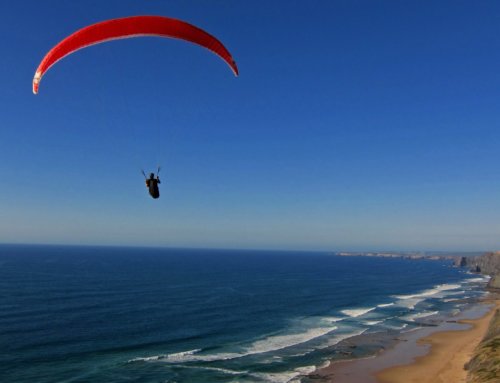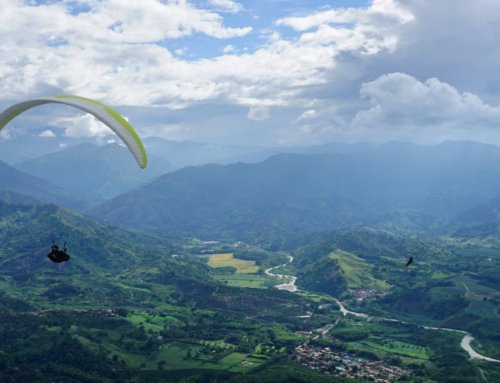There was a safety incident reported in SkyWings last month where a paraglider service workshop had failed to attach a segment of the brake cascade. Clearly that’s a mistake that should not have happened, but how do we minimise the risk that mistakes are made in the preparation and checking of our equipment?
When pilots send their wings in to professional service workshops for checking, they place reliance on them doing their work without making mistakes. If you don’t have confidence in your chosen workshop to spot everything that might be dangerous, and send your kit back in a completely airworthy condition, why would you send it in and spend the money getting it serviced in the first place?
The challenge for workshops is that their professionals are people just like you and me, and we can all make mistakes. We might get interrupted in our work by a phone call, a colleague or the courier’s arrival – and when we pick the job up again, we miss a critical step. We might be doing something that we’ve done so often that our mind drifts off – and while distracted we don’t notice something that we should have. We might be rushing to get the job finished in time for a customer deadline – and in our haste, we’re not as thorough as we should have been.
All paraglider service professionals are keenly aware that their customer’s safety depends critically on the quality of their work. They also know that any mistakes they might make could dramatically affect their reputation amongst pilots. So there are powerful incentives to get everything completely right. Whilst a total commitment to avoid making mistakes is essential, on its own it simply is not enough.
Best practice for all organisations, whether they’re service workshops or not, is to recognise the possibility of human error, and put in place appropriate checks and systems. These should be designed to minimise the risk of errors happening in the first place, and detecting any errors that do happen. Many of you may already be familiar with a business discipline called Risk Management, which can be applied to address these issues.
Having used risk and quality management techniques in large organisations earlier in my career, I knew that there were various things that needed to be done when I took over Aerofix in 2015. There were things to do with – in the jargon – people, with processes and with technology, that were a priority for us in early 2016. The importance of the work demanded these things be formalised, but in a way that was appropriate for a small business, and not one employing hundreds or thousands of staff.
In any business, choosing the right people is critical. For the work Aerofix does, having people who are passionate pilots who have a careful and methodical approach was our starting point. We put in place a formal training programme and performance standards that had to be achieved before anyone could be signed off. Big companies use big words like aptitude and competence, and that’s what we’re driving at.
We wrote a procedures manual, and established checking requirements over those processes. But which processes needed checking? Well for trainees, everything must be double checked. For people assessed as fully competent, some checks are still needed to identify any mistake they might inadvertently make. Risk management played a part in deciding what to check.
Aerofix already had checklists for all the main jobs, and service forms to record the work we did. Using risk management principles, what we then did was to look at each process and considered the risk of a mistake happening, and the potential impact of that mistake going undetected. Based on that assessment, we could then put in place controls – in other words, checks – on the really important elements, without delaying every job with unnecessary checking.
We also examined our technology, because that can have big impact on the risk of errors. One of the major changes we made was to introduce line measurement by laser, recording the length of all lines on computer. We use this for every glider service we do: not only does it enable us to give a much better service quality, it also significantly reduces the risk of error.
All of this said, we know that it remains possible that a mistake can happen, and exceptionally one may slip through undetected. Whilst we’re striving for excellence in what we do, it’s important to remain open to the possibility of error, to encourage open discussion within the team of any “near misses” where something was almost overlooked, and learn from any “risk event” if something goes wrong.
Applying risk management to pre-flight equipment checks
I mentioned some elements of risk management I applied to Aerofix that any of us can translate to own approach to making sure our equipment is ready to fly. Here are some questions we might ask ourselves:
- Looking at my own attitude towards pre-flight checking, let’s be honest: am I someone who pays attention to detail and does a thorough check every time, or not? I should recognise that any tendency I might have towards impatience could represent a risk – so what sort of control should I put in place to keep me safe.
- How can I avoid making mistakes in my checking because of interruptions or distractions?
- What’s the right process for me to minimise the risk I miss something? For example, will I do a more thorough job of checking for canopy and line damage as I pack away rather than when I’m unpacking?
- If I leave my wing attached to my harness, does that reduce the risk of tangled lines or detached speed bar and make checking simpler?
- If I’ve just got my kit back from a service or lending it to a friend, what difference is that going to make to my checking?
- What are the risks that could have a really serious impact: twisted, tangled or knotted lines, brake lines not clear, leg straps undone or reserve handle pins coming loose? How do I make sure that I do these vital checks every time, without fail?
Before a reverse launch, do I always test inflate, and pause with the wing above my head for a final check before committing? If I’m doing a forward launch, what additional checks do I need to carry out?



